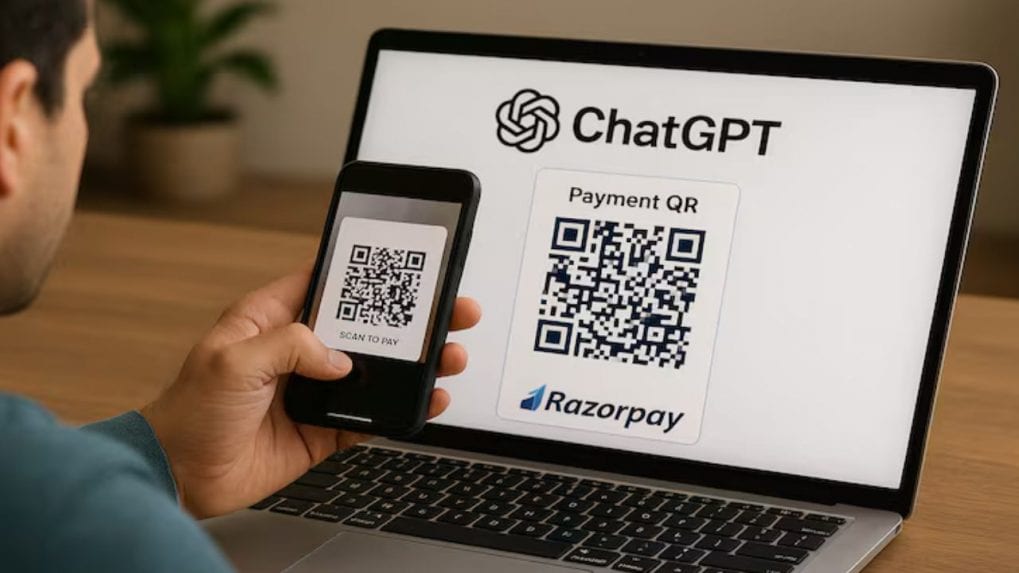Digital
Why OpenAI is hiring 100 ex-bankers: Inside the ChatGPT-maker's secret project to automate Wall Street's grunt work

A week after OpenAI’s ChatGPT-–UPI integration pilot with Bigbasket made global headlines, the conversation in India’s marketing and tech circles has shifted. The question is no longer can AI handle payments — it’s how it should. As convenience deepens, so does the responsibility to design for trust, transparency, and emotional comfort in a culture that values both intuition and inclusion.
From instant payment to intuitive persuasion
The integration of conversational AI with UPI was inevitable — the next step in India’s digital public infrastructure story after Aadhaar, UPI, and ONDC. But it also ushers in a new kind of decision-making environment where recommendations and transactions blur. When ChatGPT can suggest a product and instantly process the payment, deliberation itself becomes part of the design question.
“In India, technology adoption is shaped by trust and intuition,” said Vivek Pradeep Rana, Managing Partner at Gnothi Seauton. “UPI became mainstream because it worked across contexts and respected the way people live and transact. If AI can do the same by understanding intent, language, and habits, it will be embraced as a helpful companion. This is not about replacing human intent; it is about reducing friction and enabling better decisions.”
That nuance — reducing friction without erasing intent is where India’s next tech leadership opportunity lies. Rana believes that conversational commerce isn’t just an innovation milestone, but a global benchmark in the making. “India has shown the world that digital public infrastructure can unlock inclusion at scale. Aadhaar, UPI, and now ONDC are not isolated innovations. Together, they form the foundation of a user-centric, interoperable digital economy. Integrating UPI with conversational AI is a natural progression. Bigbasket’s move is an early signal of what is possible and likely to become a global best practice.”
Convenience vs. control: the emotional UX
The psychology of convenience is complex. In an environment where AI can complete an action faster than a human can deliberate, the line between empowerment and manipulation is thin. For Indian consumers, this isn’t just about speed, it’s about agency.
“India’s comfort with instant digital transactions has made consumers more open to AI-led purchase experiences,” said Upasna Dash, CEO and Founder of Jajabor Brand Consultancy. “For many, AI feels less like a new technology and more like a familiar companion that simplifies decisions and understands preferences. While convenience brings excitement, it also brings a natural sense of caution around privacy and control.”
Dash believes that how automation feels is as important as what it does. “When AI enhances convenience without overshadowing consumer choice, it fosters a sense of understanding and respect that strengthens trust. However, when automation feels intrusive or unclear, it can lead to skepticism. The key for brands is to design experiences that reduce friction but still allow people to make their own decisions so that convenience empowers rather than replaces confidence.”
In this emerging landscape, brand trust becomes less about price or speed and more about perceived respect. AI that nudges too hard risks breaking the emotional compact that makes digital payments so natural in India.
Transparency is the new UX currency
As AI mediates more of the buying journey, users must trust not only brands but also the logic of algorithms. “Trust must be built into the system architecture,” said Rana. “Brands using AI need to show how decisions are made, what data is used, and how privacy is maintained. Users should always feel that the system is working for them. India’s consent-based data frameworks and open technology models offer a way to ensure explainability and governance at scale.”
This idea that ethics can be architected aligns with India’s digital DNA. Open, interoperable systems like UPI, ONDC, and Account Aggregators already prove that scale and accountability can coexist. The next leap is ensuring that conversational AI operates within the same moral framework: transparent, explainable, and human-centric.
From adoption to authorship: India’s global moment
If UPI made India the world’s case study for frictionless payments, AI-commerce could make it the case study for ethical automation. As Harshi Gilara, Co-founder and CMO of Petonic AI, put it: “India’s rapid adoption of instant digital payments gives local brands a unique advantage to lead on the global stage. By combining cultural understanding with responsible and empathetic AI design, Indian companies can redefine what AI-led commerce feels like — making it seamless, personal, and rooted in trust.”
Gilara echoes Dash’s view that emotional intelligence will determine long-term success. “Brands that maintain transparency and a human touch while offering seamless experiences will be the ones that truly earn loyalty. This is an opportunity for Indian innovators to integrate this technology and set new benchmarks in AI-powered shopping experiences.”
Rana, too, sees this as India’s chance to lead globally — not just in innovation, but in governance. “No other country has built digital rails at this scale with this level of interoperability. With ONDC and Account Aggregators becoming mainstream, AI-powered commerce can be inclusive by design. If we stay focused on user outcomes and open systems, India can shape the global standard for AI-mediated commerce.”
As conversational payments evolve, India’s role will likely expand from early adopter to ethical architect. The challenge now isn’t making technology smarter — it’s making it feel right.
A week after the headlines faded, the industry’s focus is clearer: designing AI systems that are not just fast, but fair; not just intuitive, but intentional. Because in the world of AI commerce, trust is not a feature — it’s the interface itself.
In a wide-ranging interview with Storyboard18, Sorrell delivers his frankest assessment yet of how the deal will redefine creativity, media, and talent across markets.